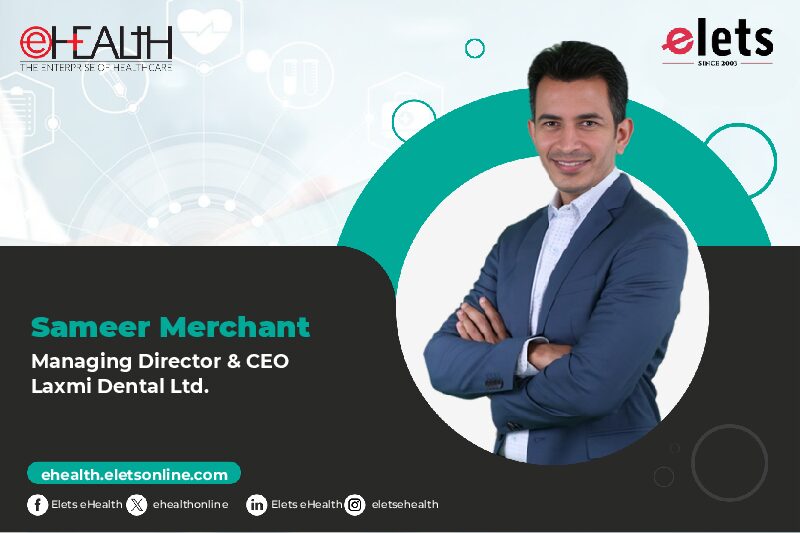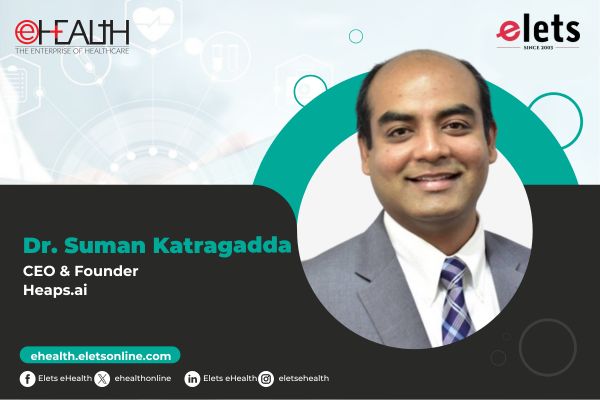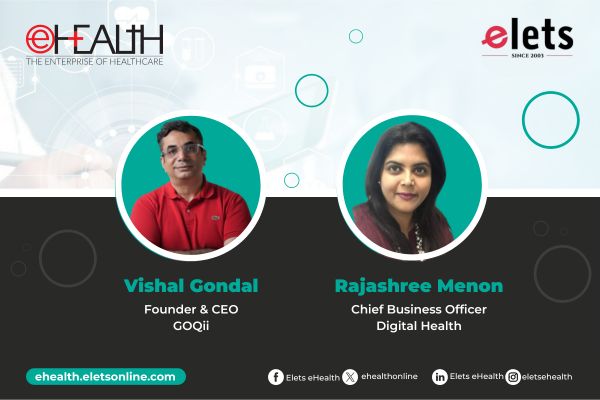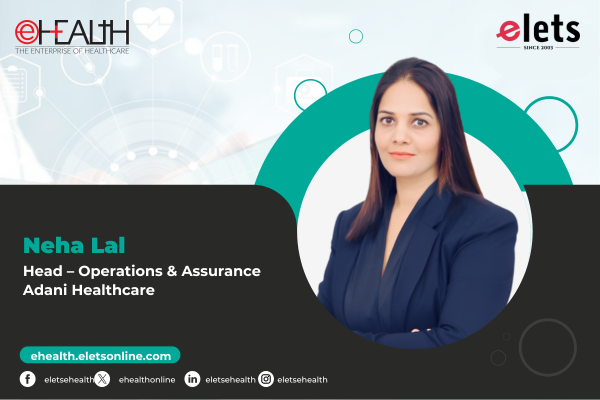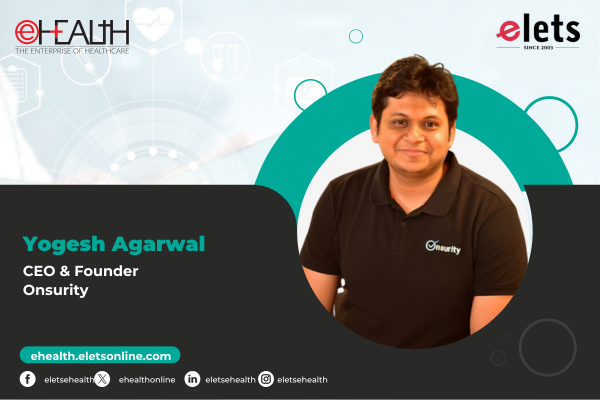
Despite significant advancements in healthcare, infertility remains a deeply stigmatised and underserved area in India, affecting nearly 10–15% of married couples. With over 25 million Indians estimated to face fertility challenges, access to specialised care in Tier-II and Tier-III cities remains limited due to infrastructure gaps, high costs, and lack of awareness. In an exclusive conversation, Dr. Umesh Jindal, Director & Senior Consultant at Jindal IVF, speaks to Dr. Asawari Savant of Elets News Network (ENN) about bridging these critical gaps through innovation, accessibility, and ethical excellence. Edited excerpts:
You pioneered assisted reproduction services in Chandigarh over three decades ago. What were the key industry and infrastructure challenges back then, and how do you see private sector clinics driving accessibility and quality in Tier-II and Tier-III cities today?

When I started this journey more than thirty years ago, assisted reproduction was virtually unheard of in India, and the infrastructure to support it was non-existent. The idea of establishing a dedicated fertility centre took root while I was at PGI Chandigarh, where I witnessed how deeply infertility—especially in women—was stigmatised. I was fortunate to be part of a WHO project on infertility, which gave me the insight and conviction that something transformative needed to be done.

At the time, there were no trained embryologists, no local equipment suppliers, and even the concept of IVF was met with scepticism. Financial constraints added to the challenge, as importing IVF medicines and equipment was prohibitively expensive. This prompted me to transition into private practice and gradually build a patient base. With support from my family, we invested everything into creating a centre that would eventually deliver the first IVF baby in North India in 1996.

There is a world of difference today in how fertility care is delivered across India. Clinics like ours are leading this transformation by integrating advanced techniques such as vitrification, blastocyst culture, and preimplantation genetic testing into regional care models. With robust lab infrastructure, skilled embryologists, and consistent clinical protocols, we are ensuring that Tier-II and Tier-III cities experience the same standards of care as metro centres, without diluting quality or ethics.

This is made possible through strategic partnerships with local hospitals in areas such as Hamirpur, Mandi, Kangra, Yamunanagar, and others, where Jindal IVF is bringing expert IVF interventions closer to patients. These collaborations significantly reduce the need for long-distance travel, ensure better continuity of care, and ease the emotional and logistical burden on families by offering world-class fertility treatment within their own communities.
With the rapid evolution in embryology lab technologies and AI-based embryo selection tools, how is Jindal IVF integrating cutting-edge tech to improve IVF success rates and streamline patient journeys?
At Jindal IVF, we have always believed that science and empathy must evolve together, which is why we are consistently integrating the latest embryology advancements and AI-supported tools into our clinical workflows. Our labs are equipped with time-lapse imaging incubators that allow for continuous embryo monitoring without disruption, giving us deeper insight into embryonic development.
We are also planning to develop AI-based scoring models to complement embryologist assessments, helping us select the most viable embryos for transfer with greater precision. This not only improves success rates but also reduces the number of cycles needed, making the process less physically and emotionally taxing for patients.
Our adoption of preimplantation genetic testing has helped us screen for chromosomal abnormalities and hereditary conditions more accurately. From improved stimulation protocols to seamless follow-up systems, every layer of the patient journey is enhanced through intelligent, personalised, tech-enabled care, designed to deliver outcomes without compromising comfort or ethics.
Jindal IVF has been at the forefront of ART advancements. What are some of the latest innovations being adopted at the centre?
When it comes to leading advancements in assisted reproduction, Jindal IVF continues to set benchmarks by integrating innovations that directly impact success rates and patient care. India carries an immense burden of inherited genetic disorders, with conditions like thalassemia, sickle cell anaemia, cystic fibrosis, Duchenne muscular dystrophy, Fragile X syndrome, and Down syndrome affecting millions.
To address this, we have implemented advanced genetic testing techniques such as PGT-HLA and PGT-SR to help families prevent the transmission of such conditions. Alongside, procedures like blastocyst culture and vitrification have enhanced embryo selection and preservation, improving both success rates and treatment flexibility.
In complex male infertility cases, such as obstructive and non-obstructive azoospermia, we offer surgical retrieval and tailored IVF protocols to deliver positive outcomes. Our lab infrastructure is aligned with international benchmarks, and our clinical team remains dedicated to innovations that uphold medical excellence while keeping the patient’s well-being and future at the core of every decision.
You’ve led many training initiatives in ART and ultrasound. What structured efforts are needed across India to build a skilled ART workforce, especially embryologists and sonologists, to meet the rising demand?
Building a skilled ART workforce requires more than conventional training. What we need is a structured national framework that standardises education for embryologists and sonologists, combining hands-on lab experience with ethical and clinical exposure.
At Jindal IVF, we have always believed in mentoring through real-world practice, which is why we collaborate with academic institutions to offer advanced training. As demand for IVF grows, the country must invest in long-term capacity building with clear accreditation systems and robust evaluation methods. This is how we can create professionals who are not just technically proficient but also sensitive to the human side of fertility care.
What potential do you see for government bodies and private IVF centres to collaborate on fertility preservation awareness, genetic counselling, and affordability initiatives for underserved populations?
There is immense potential for impactful collaboration between government bodies and private IVF centres when it comes to fertility preservation, genetic counselling, and making ART more affordable for underserved populations. Government institutions can offer outreach infrastructure and public trust, while centres like ours bring clinical expertise, advanced technologies, and experience with complex genetic procedures.
Together, they can run awareness campaigns, build subsidised programs for cancer patients and high-risk groups, and integrate reproductive genetics into primary care. For example, conditions like thalassemia are prevalent in India and can be effectively addressed through preimplantation genetic testing—yet awareness remains low. If public-private partnerships align on education, early intervention, and cost-sharing models, we could radically improve outcomes for vulnerable communities.
Over the years, Jindal IVF has played a pivotal role in shaping fertility care in North India. What plans do you envision for its future growth in terms of digital integration or geographic expansion?
Our future roadmap focuses on expanding both reach and impact while staying rooted in ethical, evidence-based care. Digitally, we are working on strengthening teleconsultation and remote monitoring tools to ensure continuity of care for patients outside Chandigarh. This will be especially valuable for follow-ups, counselling, and early diagnostics.
On the geographic front, we are deepening our presence across North India through strategic partnerships that allow us to bring our protocols, lab standards, and expert team into Tier-II and Tier-III cities. Rather than rapid expansion, we are prioritising quality replication with a hub-and-spoke model, enabling patients to access advanced ART services with fewer logistical barriers.
Additionally, we plan to invest further in training programs and genetic research, especially in areas like preimplantation testing, to ensure patients across regions benefit from the same depth of care that Jindal IVF is known for.
Also read: India Sets Global Benchmark in Immunisation and Child Health: UN Reports Applaud Progress
As India emerges as a destination for fertility tourism and cross-border care, how do you envision the future of the ART industry, particularly in terms of consolidation, digitisation, and international partnerships?
There is clear momentum building in India’s ART industry as it evolves into a global hub for fertility tourism and cross-border reproductive care. With excellent clinical outcomes, advanced techniques, and cost advantages, the country is attracting a growing number of international patients.
A strong referral ecosystem is also emerging, where trusted clinics coordinate with practitioners and diagnostic centres across geographies to streamline patient journeys and maintain continuity of care. Digitisation is reshaping how care is delivered, with AI-led diagnostics, virtual consultations, and real-time treatment tracking enhancing accessibility and efficiency.
Moreover, international collaborations through training, research, and knowledge exchange will become more prominent. Centres like ours are uniquely placed to lead this next phase, offering a combination of medical excellence, ethical integrity, and deeply personalised care that appeals not just locally but globally.
Be a part of Elets Collaborative Initiatives. Join Us for Upcoming Events and explore business opportunities. Like us on Facebook , connect with us on LinkedIn and follow us on Twitter , Instagram.
"Exciting news! Elets technomedia is now on WhatsApp Channels Subscribe today by clicking the link and stay updated with the latest insights!" Click here!







